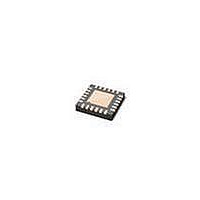ISP1505ABS NXP Semiconductors, ISP1505ABS Datasheet - Page 29

ISP1505ABS
Manufacturer Part Number
ISP1505ABS
Description
RF Transceiver USB2.0/ULPI1.1 XCVR
Manufacturer
NXP Semiconductors
Datasheet
1.ISP1505ABS557.pdf
(76 pages)
Specifications of ISP1505ABS
Number Of Receivers
5
Number Of Transmitters
4
Operating Supply Voltage
3 V to 3.6 V
Maximum Operating Temperature
+ 85 C
Mounting Style
SMD/SMT
Package / Case
HVQFN-24
Maximum Data Rate
480 Mbps
Maximum Supply Current
0.001 mA, 48 mA
Minimum Operating Temperature
- 40 C
Protocol Supported
USB 2.0
Lead Free Status / RoHS Status
Lead free / RoHS Compliant
Other names
ISP1505ABS,557
Available stocks
Company
Part Number
Manufacturer
Quantity
Price
Company:
Part Number:
ISP1505ABS
Manufacturer:
NXP
Quantity:
13
NXP Semiconductors
ISP1505A_ISP1505C_3
Product data sheet
For more information, refer to UTMI+ Low Pin Interface (ULPI) Specification Rev. 1.1 .
b. Host chirp: If the host does not detect the peripheral chirp, it must continue
c. High-speed idle: The peripheral must detect a minimum of Chirp K-J-K-J-K-J. Each
than 7 ms after reset time T
up its clock within 5.6 ms, leaving 200 s for the link to start transmitting the
Chirp K, and 1.2 ms for the Chirp K to complete (worst case with 10 % slow clock).
asserting SE0 until the end of reset. If the host detects the peripheral Chirp K for
no less than 2.5 s, then no more than 100 s after the bus leaves the Chirp K
state, the host sends a TXCMD (NOPID) with an alternating sequence of Chirp Ks
and Js. Each Chirp K or Chirp J must last for no less than 40 s and no longer than
60 s.
Chirp K and Chirp J must be detected for at least 2.5 s. After seeing that
minimum sequence, the peripheral sets TERMSELECT = 0b and
OPMODE[1:0] = 00b. The peripheral is now in high-speed mode and sees !squelch
(01b on LINESTATE). When the peripheral sees squelch (10b on LINESTATE), it
knows that the host has completed chirp and waits for Hi-Speed USB traffic to
begin. After transmitting the chirp sequence, the host changes OPMODE[1:0] to
00b and begins sending USB packets.
Rev. 03 — 26 August 2008
0
. If the peripheral is in low-power mode, it must wake
ULPI HS USB host and peripheral transceiver
ISP1505A; ISP1505C
© NXP B.V. 2008. All rights reserved.
28 of 75
















